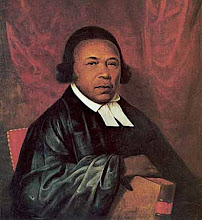We Have Elected A New Bishop
See either the October 2009 or November 2009 Blog for information about the election of The Rev. Dr. Ian T. Douglas' as the 15th Bishop of the Diocese of Connecticut.
I Wonder Why?
This column answers interesting questions.
Ever wonder what the song "The Twelve Days of Christmas" means?
The Twelve days of Christmas are the twelve days between Christmas Day, December 25th, the birth of Jesus, and Epiphany, January 6th, the day Christians celebrate the arrival of the Magi (Wise Men) and the revelation of Christ as the light of the world.
The Christmas song, "the Twelve Days of Christmas" had its origin in religious symbolism - and with a serious purpose.
It dates from a time of religious persecution. The song, was written as a kind of secret catechism that could be song in public without fear of arrest - a learning or memory aid to Christians in fact.
The song can be interpreted on two levels - the surface meaning, or the hidden meaning known only to the Christians involved. Each element is a code word for a religious truth.
1. The partridge in a pear tree is Jesus.
2. The two turtledoves are the Old and New Testaments.
3. Three French hens stand for faith, hope and love.
4. The four calling birds are the four Gospels.
5. The five gold rings recall the Hebrew Torah (Law), or the Pentateuch, the first five books of the Old Testament.
6. The six geese a-laying stand for the six days of creation.
7. The seven swans a-swimming represent the seven gifts of the Holy Spirit.
8. The eight maids a-milking are the eight Beatitudes.
9. Nine ladies dancing are the nine fruits of the Holy Spirit.
10. The ten lords a-leaping are the Ten Commandments.
11. Eleven pipers piping represent the eleven faithful Apostles.
12. Twelve drummers drumming symbolize the twelve points of doctrine in the Apostles Creed.
If you think Jesus being symbolized as a partridge in a pear tree sounds blasphemous, remember: "Jerusalem! Jerusalem How often would I have sheltered thee under my wings, as a hen does her chicks, but thou wouldst not have it so." (Luke 13:34 and Matthew 23:34).
The "true love" in the song refers to God Himself.
The "me" receiving the gifts is every Christian.
So that "silly" song we sing at Christmas time has more meaning than we thought.
The preceding explanation was provided by:
Holy Trinity Luther Church
30 Lockwood Avenue
New Rochelle, New York

No comments:
Post a Comment